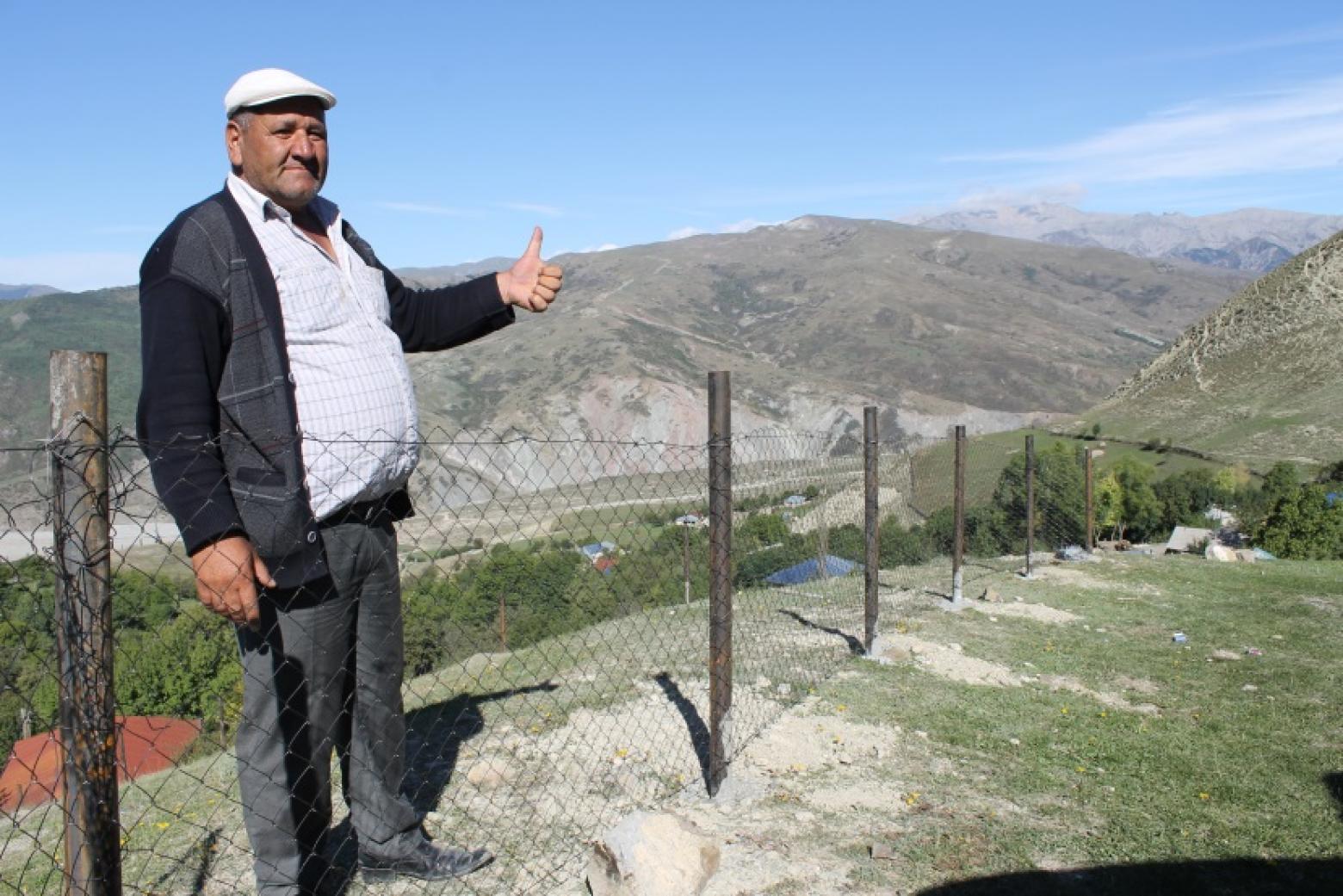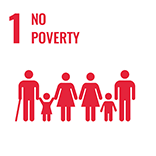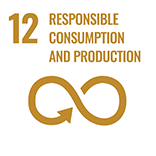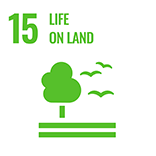Ecosystem-based erosion control in Azerbaijan

Summary
This solution is part of the GIZ Programme “Integrated Biodiversity Management, South Caucasus”, which implemented and tested affordable solutions together with local communities, preventing erosion and managing the mountainous ecosystems in a sustainable way.
Pastures in the South Caucasus region are under pressure through unsustainable use and climate change processes. Piloted measures include: stabilization of slopes and river beds, setup of hay-meadows, afforestation, orchard management and construction of a tree nursery.
Overview
- Location:
- Implementation sites:
-
- Single country
- Single location
- Mountain region:
-
Caucasus Mountains
- Province:
-
- Ismayilli
- Site locations:
-
Ehen
- Solution scale:
- Ecosystem type(s):
- Solution type(s):
- Sector(s):
- Climate impact(s) addressed:
- Other climate impact(s) addressed:
-
- Erosion, Land and Forest Degradation
- Climate impact time-scale(s):
- Main benefit associated with the solution:
- Co-benefit(s) associated with the solution implementation:
- Implementation timeline:
-
- 2015 - 2019
- Sendai targets:
-
Solution details
Main beneficiaries & outcomes
Main beneficiaries
Ministry of Ecology and Natural Resources, Ministry of Agriculture, Ismayilli District Administration, local municipalities and local communities.
Key outcomes
The solution fostered the knowledge of decision makers and farmers on erosion processes and the sustainable management of biodiversity. Through various workshops, trainings and excursions the value of ecosystem services was explained and translated into the realities of the participants. The mainstreaming of biodiversity was strengthened through the facilitation of an inter-sectoral steering group on district level. Impact of different erosion control measures is being measured through a monitoring system.
The implemented measures are used to demonstrate effective erosion control to stakeholders and neighbouring communities, to raise interest of politicians and local communities in ecosystem-based erosion control. The aim was to make the construction of erosion control measures affordable and easy to undertake.
In Ehen village in Ismayilli region, several bioengineering and engineering measures have been implemented: steep hills have been stabilized with terraces and fruit trees, several check-dams and a gabion have been constructed in eroded river beds, areas with gully erosion have been fenced and afforested and eroded pastures have been re-established as hay-meadows. Alternative income generating practices have been supported through trainings and funding: orchard management, beekeeping and hay production.
Planning and implementation
This solution consists of three building blocks.
Building block 1: Erosion control measures
Implemented erosion control measures contribute to the conservation of biodiversity through the protection of natural resources from anthropogenic induced erosion processes and through the rehabilitation of degraded areas. Special attention is paid to the causes and underlying drivers of erosion in order to develop strategies to improve erosion control at local level. Together with national partners Ismayilli district of Azerbaijan was selected as a pilot region.
Different erosion control measures are conceptualized and implemented through the cooperation of national and local partners, involving relevant stakeholders, international and local experts and local villagers. In order to rehabilitate the eroded lands and avoid further land degradation locally applicable erosion control measures are introduced to the land users. Measures include ‘grey’ measures (terraces, fences) as well as ‘green’ measures (afforestation, orchard management) and are combined with alternative income generating practices.
Socio-economic and ecological benefits of better land management and erosion control measures are monitored, documented and demonstrated to surrounding communities.
Building block 2: Participatory land use planning
In order to properly monitor the participatory implementation of the programme a “Community Management Group” (CMG) has been established. Members of the group were selected via an open voting involving all municipality members. The CMG members represent all economic and social groups that depend on natural resources (e.g. cattle breeders, beekeepers, gardeners…) including women and youth.
During the planning and implementation phase of the erosion control measures, the CMG meets regularly, informs on the current situation, discusses challenges and decides on further steps. The CMG presents its proposal and comments on the management of public land (communal land) to relevant stakeholders of the District Administration, the Property Committee, the Rayon Agriculture Department and the regional department of the Ministry of Ecology.
After incorporating the feedback from different stakeholders the CMG approves the implementation of the programme activities. Moreover the CMG is a mechanism to negotiate diverging interests and solve occurring conflicts.
Building block 3: Human Capacity Development for erosion control measures
To support the participatory approach and achieve sustainable outcomes, local capacities are continuously developed. Therefore, international and local experts have been invited to train local communities on implementing and maintaining erosion control measures, e.g.: afforestation, maintenance of tree nurseries, orchard management or beekeeping. Local and regional meetings among communities are used to promote activities and enhance knowledge exchange. Trainings on integrating ecosystem services into development planning are also provided to local authorities and representatives of partners.
To enable national and regional exchange, an erosion control handbook that reflects showcases of implemented ECM in pilot regions was developed and will be distributed among relevant ministries, research and training institutions, NGOs, construction companies and experts.
Finance
The German Federal Ministry of Economic Cooperation and Development (BMZ) financed the project. As the project was a regional project the cost was EUR 22,892,420 in total, and was not separated for each individual country project.
Innovation
The project implemented a ’learning by doing’ approach, requesting that partners assume leadership in decision-making and implementation. The identification and capacity-building of leaders and change-makers in the community further strengthened this action and provided a means of powering it.
Long term project sustainability and maintenance
The project has strengthened institutional, staffing, and financial sustainability through partner ownership and capacity building along several main action lines. These include building on existing structures and workstreams at the partner organisations (for example in the educational system) or supporting emerging structures to expand partner decision-making and operational capacity through measures such as deployment of local short-term experts and targeted organisational development and training. It has worked on developing replicable pilots and actions (based on cost-benefit assessments), facilitated access to funding streams beyond the project duration and finally, generated a positive sense of success and pride among the participants. A significant part of the project results appears permanent, stable and resilient for the long term under current conditions.
Capacities for design and implementation
Knowledge
The IBiS Project aimed to improve intersectoral management of biodiversity and ecosystem services, basing its practice on robust data. The project developed pilot initiatives to mainstream biodiversity conservation in agriculture, forest and pasture land management – and aimed to share the knowledge generated by these pilots for replication at policy level while strengthening a regional network and fostering sustainability-oriented capacity-building and awareness-raising activities.
Outlook & Scalability
Barriers and adverse effects
Limited funding is a major risk for the durability of positive results, even if important future funding sources have been unlocked with the support of the project.
Potential for upscaling and replication
Building Block 1 is concerned with the erosion control activities of the programme. Those are piloted on the local level and used later to upscale the programme and present feasible solutions to other communities.





Comments
There is no content